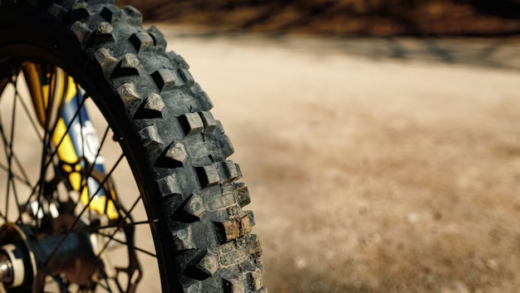Is the sight of rust on your beloved bike causing you distress? Don’t fret! Rust might be a common issue, but with the right techniques, you can restore your two-wheeled companion to its former glory. In this comprehensive guide, we’ll delve into proven methods and expert tips on how to clean rust off a bike. Whether you’re a seasoned cyclist or just starting out, our insights will ensure your bike shines anew.
The Menace of Rust
Rust, scientifically known as iron oxide, is the result of a chemical reaction between iron and oxygen. Bikes are particularly susceptible to rust due to their exposure to varying weather conditions. It not only mars the appearance but can also weaken the structural integrity of the frame, components, and even the drivetrain.
Tools and Materials You’ll Need
Before we dive into the methods, let’s gather the arsenal of tools and materials required for this endeavor. Here’s a quick checklist to ensure you’re well-prepared:
- Wire Brush: An essential tool for scrubbing off loose rust and grime;
- Steel Wool: Ideal for tackling finer rust particles without damaging the surface;
- Bike Cleaning Solution: Use a mild, non-corrosive cleaning solution to dissolve rust;
- White Vinegar: A natural rust dissolver that works wonders on smaller components;
- Rust Converter: This chemical solution transforms rust into a stable compound;
- Protective Gear: Safety first! Gloves and eye protection are a must;
- Microfiber Cloths: Soft cloths for wiping and drying surfaces.
Removing Rust: Step by Step
Now, let’s roll up our sleeves and get to the heart of the matter. Follow these steps to effectively clean rust off your bike:
Step 1: Preliminary Cleaning
Start by giving your bike a thorough rinse to remove loose dirt and debris. This prepares the surface for the rust removal process.
Step 2: Wire Brush Magic
Take your wire brush and gently scrub the rusted areas. The bristles help dislodge rust without causing damage.
Step 3: Steel Wool Fineness
For stubborn rust, graduate to steel wool. This fine abrasive material can tackle rust without scratching the surface.
Step 4: Rust Dissolving Elixir (White Vinegar)
Dampen a cloth with white vinegar and place it over the rusted spots. Let it sit for a few hours before gently scrubbing off the rust.
Step 5: Enter Rust Converter
Apply rust converter on the affected areas. This converts rust into a stable compound, preventing further corrosion.
Step 6: Thorough Rinse
After using any rust-removing agents, make sure to rinse the bike thoroughly to remove any residue.
Alternative Methods: Chemical Solutions and Polishing
If the rust is particularly stubborn, consider these alternative methods:
Lemon Juice Soak
The citric acid in lemon juice can effectively dissolve rust. Create a mixture of lemon juice and salt, apply it to the rusted areas, and let it sit for a few hours before scrubbing.
Commercial Rust Removers
Several commercial rust removal products are available. Follow the manufacturer’s instructions for safe and effective use.
Polishing for Prevention
After removing rust, apply a layer of protective wax or polish to prevent future corrosion.
Maintenance: Keeping Rust at Bay
Prevention is key to maintaining a rust-free bike. Here’s how:
- Regular Cleaning: Clean your bike after rides to remove sweat, dirt, and moisture;
- Dry Storage: Store your bike in a dry area to prevent exposure to humidity;
- Protective Coatings: Apply rust-resistant coatings to vulnerable areas;
- Frequent Inspections: Regularly inspect your bike for signs of rust and address them promptly.
Comparison: DIY vs. Professional Rust Removal
When it comes to tackling rust, you have two main options: DIY methods or seeking professional help. Let’s compare the two approaches:
DIY Rust Removal
Pros:
- Cost-effective: DIY methods generally involve household items, saving you money;
- Convenience: You can address rust issues at your own pace and according to your schedule;
- Learning Experience: DIY allows you to learn about bike maintenance and rust prevention.
Cons:
- Time-Consuming: Rust removal can be time-intensive, especially for extensive rust;
- Skill Required: Effective rust removal techniques require some skill and practice;
- Limited Resources: DIY methods may not be as effective for severe rust problems.
Professional Rust Removal
Pros:
- Expertise: Professionals have experience in dealing with various rust scenarios;
- Time-Saving: Professional services can quickly restore your bike’s condition;
- Specialized Tools: Professionals have access to specialized tools for efficient rust removal.
Cons:
- Cost: Professional services come at a cost, which may vary depending on the extent of rust;
- Limited Control: You might not be directly involved in the process;
- Accessibility: Professional services might not be readily available in all areas.
Infographic: Rust Prevention Tips
Here’s a visually engaging infographic that highlights essential rust prevention tips:
- Regular Cleaning: Remove dirt and moisture to prevent rust from forming;
- Protective Coatings: Apply rust-resistant coatings on vulnerable areas;
- Dry Storage: Store your bike in a dry place to minimize exposure to moisture;
- Quick Fixes: Address minor rust spots promptly to prevent them from spreading;
- Periodic Inspections: Regularly inspect your bike for signs of rust and address them early.
Common Rust Removal Methods
For a quick reference, here’s a comparison table of common rust removal methods:
| Method | Effectiveness | Cost | Time | Skill Required |
|---|---|---|---|---|
| Wire Brush | Moderate | Low | Moderate | Low |
| Steel Wool | Moderate | Low | Moderate | Low |
| White Vinegar | Low | Low | High | Low |
| Rust Converter | High | Moderate | Moderate | Low |
| Lemon Juice Soak | Moderate | Low | High | Low |
| Commercial Removers | High | Moderate | Moderate | Low |
Troubleshooting: Dealing with Stubborn Rust
Encountering particularly stubborn rust spots? Here’s a troubleshooting guide to help you out:
- Assess the Severity: Determine how deep the rust has penetrated to select the appropriate removal method;
- Use Penetrating Oil: Apply a penetrating oil to loosen the rust before using other methods;
- Sandpaper or Emery Cloth: For deep rust, gently sand away the rust using fine-grit sandpaper;
- Patience is Key: Some rust spots might require repeated treatments over several days;
- Consider Professional Help: If all else fails, consult a professional for specialized removal.
Conclusion
There you have it—the ultimate guide on how to clean rust off a bike. By following these steps and implementing preventive measures, you can extend the lifespan of your bike and ensure it remains a reliable and corrosion-free companion on your cycling adventures.
FAQs
While vinegar can dissolve rust, be cautious when using it on painted surfaces as it might damage the paint. Test a small, inconspicuous area first.
Aim for a thorough cleaning after every few rides. More frequent cleaning is advisable if you ride in wet or salty conditions.
Yes, but use a soft-bristle wire brush to avoid scratching the frame. Always brush gently.
While indoor storage helps, humidity can still cause rust. Regular cleaning and maintenance are crucial.
Absolutely! Lemon juice, baking soda paste, and vinegar are eco-friendly alternatives to chemical rust removers.






